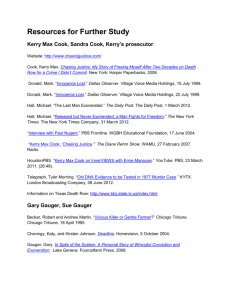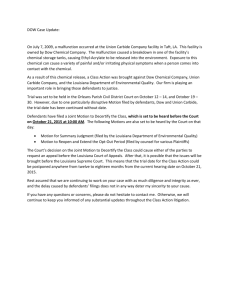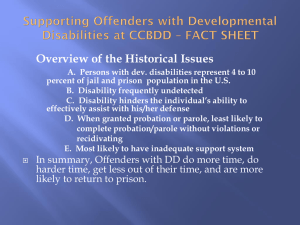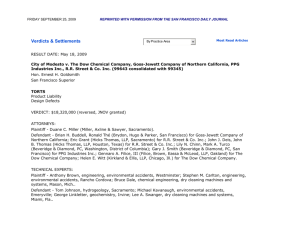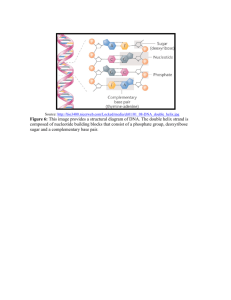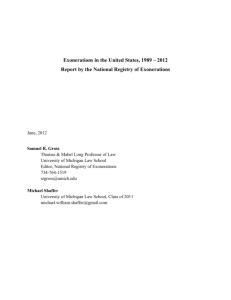Guilty Pleas in “Group Exonerations”
advertisement
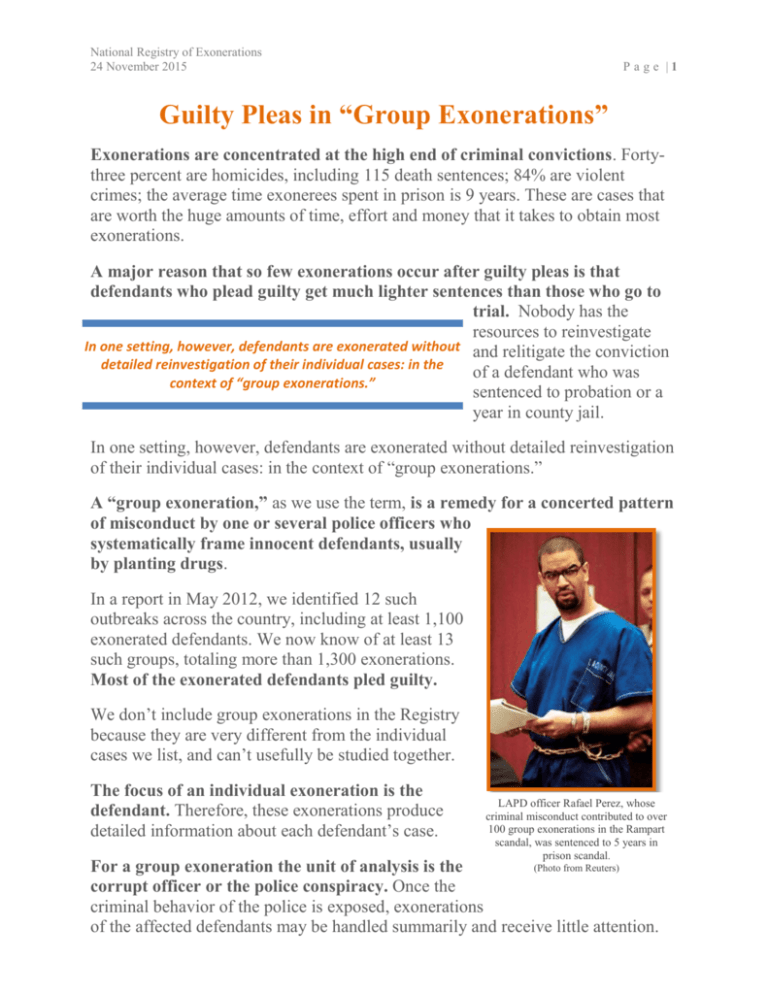
National Registry of Exonerations 24 November 2015 P age |1 Guilty Pleas in “Group Exonerations” Exonerations are concentrated at the high end of criminal convictions. Fortythree percent are homicides, including 115 death sentences; 84% are violent crimes; the average time exonerees spent in prison is 9 years. These are cases that are worth the huge amounts of time, effort and money that it takes to obtain most exonerations. A major reason that so few exonerations occur after guilty pleas is that defendants who plead guilty get much lighter sentences than those who go to trial. Nobody has the resources to reinvestigate In one setting, however, defendants are exonerated without and relitigate the conviction detailed reinvestigation of their individual cases: in the of a defendant who was context of “group exonerations.” sentenced to probation or a year in county jail. In one setting, however, defendants are exonerated without detailed reinvestigation of their individual cases: in the context of “group exonerations.” A “group exoneration,” as we use the term, is a remedy for a concerted pattern of misconduct by one or several police officers who systematically frame innocent defendants, usually by planting drugs. In a report in May 2012, we identified 12 such outbreaks across the country, including at least 1,100 exonerated defendants. We now know of at least 13 such groups, totaling more than 1,300 exonerations. Most of the exonerated defendants pled guilty. We don’t include group exonerations in the Registry because they are very different from the individual cases we list, and can’t usefully be studied together. The focus of an individual exoneration is the defendant. Therefore, these exonerations produce detailed information about each defendant’s case. LAPD officer Rafael Perez, whose criminal misconduct contributed to over 100 group exonerations in the Rampart scandal, was sentenced to 5 years in prison scandal. (Photo from Reuters) For a group exoneration the unit of analysis is the corrupt officer or the police conspiracy. Once the criminal behavior of the police is exposed, exonerations of the affected defendants may be handled summarily and receive little attention. National Registry of Exonerations 24 November 2015 P age |2 As a result, we may know little or nothing about the individual cases that are dismissed in group exonerations, sometimes not even the names of the defendants or the charges for which they were convicted. In some cases, it’s impossible to be confident that the exonerated defendants are innocent. For some groups, we only have estimates of the number of exonerated defendants. One thing we do know about group exonerations, however, is that few of the defendants went to trial. The group exoneration for which we have the most detailed information occurred in Tulia, Texas, in 2003, where we know exactly what happened. Thirty-five defendants were arrested on the word of a single corrupt undercover officer who planted quantities of highly diluted cocaine from a personal stash and charged them with drug sales that never occurred. Eight of the Tulia defendants were convicted at trial and received sentences that ranged up to life imprisonment, and averaged nearly 47 years. Tulia, Texas, exoneree Dennis Allen hugs his daughters after his release from the Swisher County courthouse (Photo from CBSnews.com) The remaining 27 defendants pled guilty. Most received probation and fines or were sentenced to jail for terms from few months to two years. There must be many innocent defendants outside the scope of group exonerations who face the same choice as the Tulia defendants, and accept plea bargains to months or years in jail. There could be thousands or tens of thousands a year, but we never learn about them. It would be prohibitively expensive to investigate and prove the innocence of each defendant. It never happens—unless we discover a common problem that infects dozens or hundreds of cases simultaneously.
